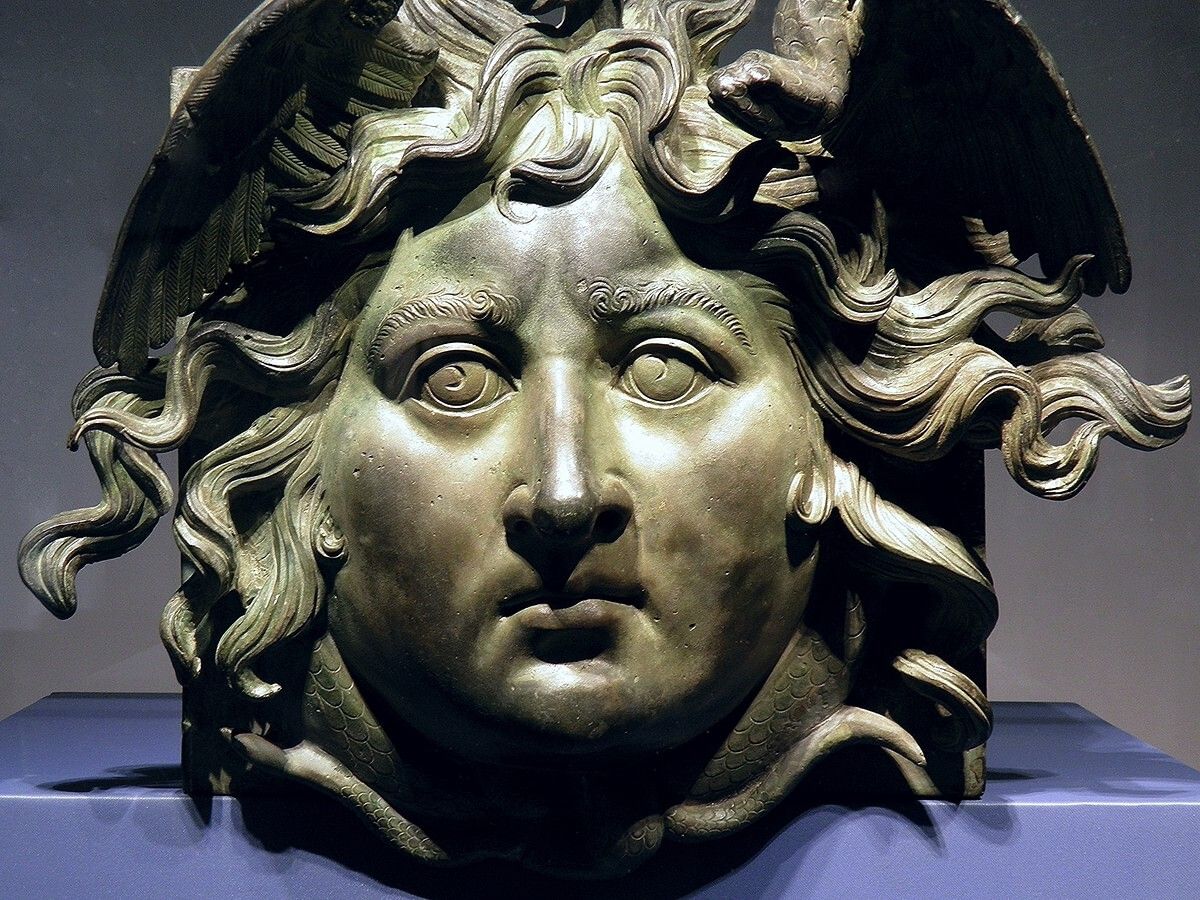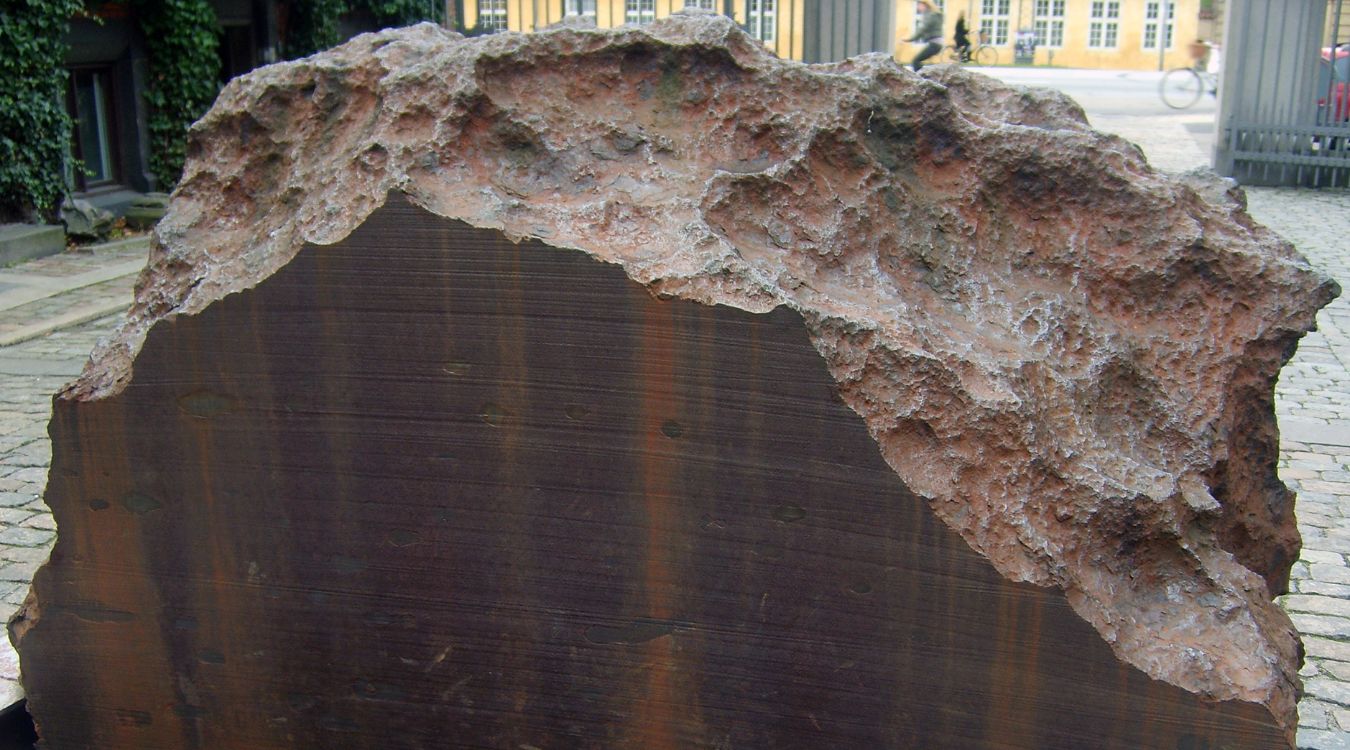
Medusa is one of the most intriguing figures in Greek mythology. Known for her snake-covered head and gaze that turns people to stone, she has fascinated people for centuries. But who was Medusa really? Medusa wasn't always a monster. She started as a beautiful maiden, cursed by Athena. Her story is filled with twists, from her transformation to her eventual demise at the hands of Perseus. Did you know that Medusa's blood had magical properties? Or that she had two immortal sisters? Whether you're a mythology buff or just curious, these 35 facts about Medusa will shed light on her mysterious life. Get ready to dive into the world of ancient myths and discover the real Medusa behind the legend.
Key Takeaways:
- Medusa, a once beautiful maiden, was cursed by Athena and transformed into a terrifying monster with the power to turn people to stone, leaving a lasting legacy in mythology and culture.
- Medusa's story has inspired art, literature, and even language, with her image and traits being used to symbolize fear, power, and resilience across different cultures and time periods.
Medusa's Origins
Medusa, one of the most famous figures in Greek mythology, has a story filled with intrigue and tragedy. Her origins are as fascinating as her appearance.
- Medusa was originally a beautiful maiden. She was known for her stunning beauty, which caught the eye of many gods and mortals alike.
- She was one of the three Gorgon sisters. Unlike her sisters, Stheno and Euryale, Medusa was mortal.
- Medusa's parents were Phorcys and Ceto. These ancient sea deities were part of the primordial gods in Greek mythology.
- She served as a priestess in Athena's temple. Her devotion to the goddess of wisdom and war was unwavering until her transformation.
The Curse of Medusa
Medusa's transformation into a monster is one of the most tragic tales in mythology. Her curse was both a punishment and a symbol of divine power.
- Medusa was cursed by Athena. The goddess transformed her into a monster after she was violated by Poseidon in Athena's temple.
- Her hair turned into snakes. This terrifying transformation made her appearance deadly to anyone who looked at her.
- Medusa's gaze could turn people to stone. This power made her one of the most feared creatures in Greek mythology.
- She was banished to a remote island. Medusa lived in isolation, far from the world she once knew.
Medusa in Mythology
Medusa's story doesn't end with her transformation. Her life and death have been recounted in numerous myths and legends.
- Perseus was tasked with killing Medusa. The hero was sent on this dangerous mission by King Polydectes.
- He used a mirrored shield to avoid her gaze. This clever tactic allowed Perseus to behead Medusa without turning to stone.
- Medusa's head retained its power after her death. Perseus used it as a weapon in several other myths.
- Pegasus sprang from Medusa's blood. The winged horse was born when her blood touched the earth.
Medusa's Symbolism
Medusa's image and story have been interpreted in various ways throughout history. Her symbolism is rich and complex.
- Medusa represents female rage. Her transformation and power are often seen as symbols of women's anger and strength.
- She is a symbol of protection. Ancient warriors used her image on their shields to ward off enemies.
- Medusa's head appears on the Gorgoneion. This protective amulet was used in ancient Greece to keep evil away.
- She is a figure of art and literature. Medusa has inspired countless works, from ancient pottery to modern novels.
Medusa in Modern Culture
Medusa's influence extends far beyond ancient mythology. Her image and story continue to captivate people today.
- Medusa appears in movies and TV shows. She has been featured in films like "Clash of the Titans" and TV series like "Percy Jackson."
- She is a popular figure in fashion. Designers like Versace have used her image in their logos and collections.
- Medusa is a symbol of empowerment. Many see her as a figure of strength and resilience in the face of adversity.
- Her story is used in psychology. The term "Medusa complex" refers to the fear of powerful women.
Medusa's Legacy
Medusa's legacy is vast and enduring. Her story continues to be told and retold, each time revealing new facets of her character and significance.
- Medusa's image is used in art therapy. Her story helps people explore themes of trauma and healing.
- She is a subject of feminist analysis. Scholars examine her story to understand ancient and modern views on women and power.
- Medusa's head is a symbol of the French Revolution. It was used to represent the overthrow of tyranny.
- She appears in video games. Medusa is a character in games like "God of War" and "Assassin's Creed."
Medusa's Physical Appearance
Medusa's appearance is both terrifying and captivating. Her physical traits have been described in various ways throughout history.
- Medusa's eyes were her most deadly feature. One look could turn anyone to stone.
- Her snake hair was alive. Each serpent moved independently, adding to her fearsome appearance.
- Medusa's skin was often depicted as green. This color symbolized her monstrous nature.
- She had sharp fangs. These added to her terrifying visage.
Medusa's Influence on Language
Medusa's story has even influenced the way we speak. Her name and traits have become part of our language.
- The term "Medusa" is used to describe something terrifying. It evokes fear and awe.
- "Medusa-like" refers to someone with a piercing gaze. This term is often used to describe someone with an intense stare.
- "Gorgon" is used to describe a fierce woman. This term comes from Medusa and her sisters.
Medusa in Different Cultures
Medusa's story has parallels in various cultures around the world. Her influence is not limited to Greek mythology.
- The Hindu goddess Kali shares similarities with Medusa. Both are fierce and powerful female figures.
- The Japanese Nure-onna is a serpent woman. This creature has traits similar to Medusa.
- The Celtic goddess Cailleach has a fearsome appearance. She, too, is a powerful and ancient figure.
- Medusa's image appears in African art. Her story has been adapted and retold in different cultural contexts.
Medusa's Legacy Lives On
Medusa's story continues to fascinate people today. Her myth isn't just about a monster; it's a tale of transformation, power, and tragedy. From ancient Greek mythology to modern pop culture, Medusa's image has evolved, yet her essence remains captivating. She symbolizes both beauty and terror, making her a complex figure in literature and art. Her gaze turning people to stone is a metaphor for the paralyzing power of fear and awe. Medusa's legacy teaches us about the duality of human nature and the consequences of divine intervention. Whether viewed as a victim or a villain, Medusa's story offers rich layers of meaning. Her enduring presence in various forms of media shows her lasting impact on our collective imagination. Medusa's myth reminds us that even the most fearsome figures have stories worth exploring.
Frequently Asked Questions
Was this page helpful?
Our commitment to delivering trustworthy and engaging content is at the heart of what we do. Each fact on our site is contributed by real users like you, bringing a wealth of diverse insights and information. To ensure the highest standards of accuracy and reliability, our dedicated editors meticulously review each submission. This process guarantees that the facts we share are not only fascinating but also credible. Trust in our commitment to quality and authenticity as you explore and learn with us.


